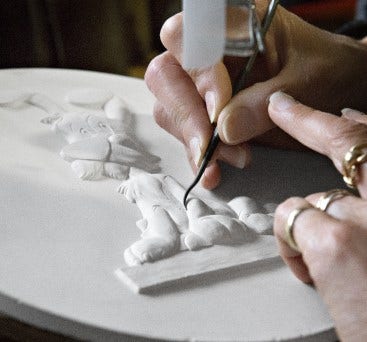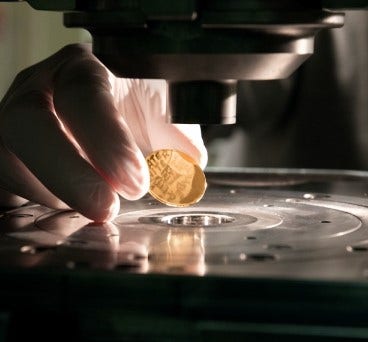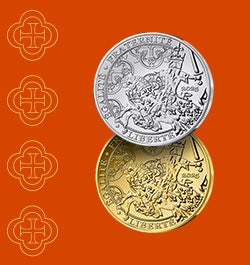- Collection highlighting the UNESCO World heritage
- Emblematic monuments all around the world
UNESCO OLYMPIA 1/4 Oz Gold Coin - Proof quality yeardate 2020
| Diameter | 22 mm |
|---|---|
| Metal | GOLD 999‰ |
| Weight | 7.78 g |
| Qualité |
Proof
La qualité "Belle Épreuve" est la plus haute qualité numismatique devant les qualités "Brillant Universel" (BU) et "courante". Une pièce belle épreuve est une pièce obtenue au moyen de coins et de flans spécialement préparés et de conditions de frappe particulières, de sorte que les motifs de gravure ressortent avec une grande netteté et que la surface est sans défaut. Les fonds de la gravure sont extrêmement brillants, les reliefs sont matés.
|
| Mintage | 1500 |
| Millésime | 2020 |
| Valeur faciale | 50€ |

Description
Our craftman
-

THE ENGRAVER
Trained at the best schools, they have the years of experience behind them necessary to master all aspects of the craft. Using industrial oil-based modelling clay and working from a design executed freehand or with CAD software, they skilfully fashion a low relief model in order to enhance the engraving and the way it catches the light. They work alternately with concave and convex plaster moulds until satisfied they have achieved the best 3D rendering of the design.
-

THE MINTER
The first minters began to ply their trade in France when striking with a hammer appeared in the 4th century BC. Nowdays, minsters use press instead of a hammer. Their knowledge of dies, engraving and metals, and their expertise - passed seamlessly down from one generation to the next for centuries - guarantees the excellence of their work.



